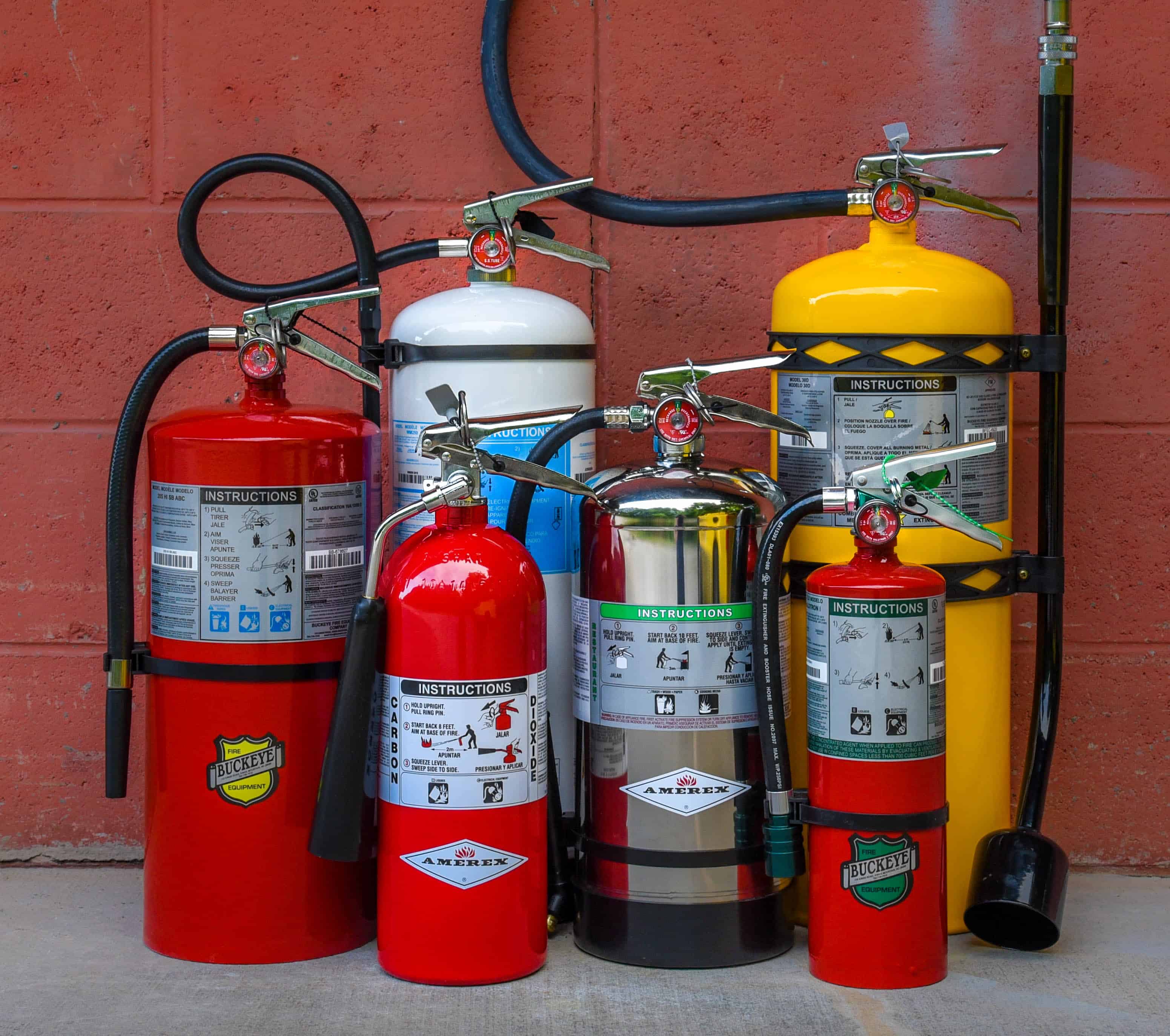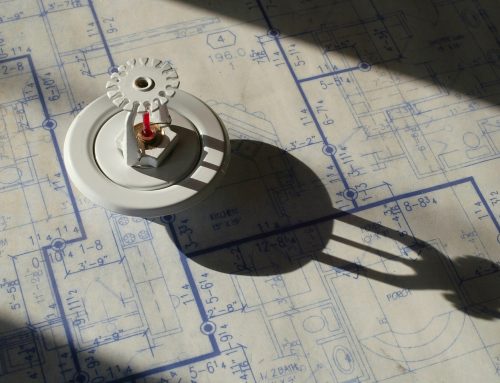Portable fire extinguishers are used to smother hundreds of unexpected fires every day. Knowing about different types of extinguishers as well as how and when to use one may enable you to save a building or even lives. It is important to note that when there is a fire, the number one priority is to for everyone to evacuate the building safely. There are a few things you need to know before we talk about the extinguishers themselves.
The 5 Fire Classes
First of all, you need to know about the different types of fires. Every fire extinguisher agent is specifically designed for a certain “class” of fire. The label on the side should indicate the type(s) of fire it can be used on. Always read the instructions to make sure you are using the extinguisher as intended.
- Class A – Ordinary combustibles
- Wood, paper, cloth, trash, plastics
- Class B – Flammable liquids and gases
- Gasoline, petroleum oil, paint, propane, butane
- Does not include cooking grease
- Class C – Energized electrical equipment
- Motors, transformers, appliances
- Class D – Combustible metals
- Potassium, sodium, aluminum, magnesium
- Class K – Kitchen applications
- Cooking oils and grease, animal fats, vegetable fats
WARNING: Using an extinguisher for the wrong fire class may cause the fire to spread, re-ignite or even explode.
The Fire Triangle
The Fire Triangle is composed of oxygen, heat, and fuel—the 3 necessary ingredients for a fire. If any of these elements is removed, a fire can be prevented or extinguished. Therefore, the goal of every type of extinguisher is to eliminate one or more of these 3 elements.
Types of Fire Extinguishers
There are 8 main kinds of fire extinguishers:
- Water and Foam fire extinguishers operate by removing the necessary heat element from the fire triangle.
- Use on Class A fires only
- CO2 fire extinguishers remove both the oxygen element and the heat element from the fire triangle.
- Use on Class B and C fires
- Dry Chemical fire extinguishers are the typical ABC extinguishers that most people are familiar with. They work by inhibiting chemical reactions involving heat, fuel, and oxygen. These extinguishers also create a barrier between the oxygen and the fuel elements of the triangle.
- Use on Class A, B, and C fires
- Wet Chemical fire extinguishers remove heat from the triangle and also prevent re-ignition by implementing a barrier between the oxygen and fuel elements. These are commonly used to extinguish grease fires in commercial kitchens.
- Use on Class K and A fires
- Clean Agent or Halogenated extinguishers work by interrupting the chemical reaction of the fire triangle.
- Use on Class B and C fires
- Dry Powder extinguishers are similar to Dry Chemical, except they work by separating the fuel from the oxygen or by removing heat from the fire triangle.
- Use on Class D fires only
- Water Mist extinguishers remove the heat element from the fire triangle and serve as an alternative to clean agent extinguishers when contamination is a concern.
- Use on Class A and C fires
- Cartridge Operated Dry Chemical extinguishers are typically chosen for rugged conditions that demand more durability than the common stored pressure dry chemical extinguisher.
- Use on Class B and C fires
10 Tips for Using a Fire Extinguisher
- Before using a fire extinguisher, sound the fire alarm and identify a safe evacuation route.
- Only use a portable fire extinguisher if the fire is confined to a small area.
- Make sure your extinguishers are located in easily accessible areas.
- Do not touch the plastic discharge horn on CO2 extinguishers—it becomes very cold and can damage skin.
- Do NOT use a fire extinguisher if your means of evacuation becomes compromised.
- Always keep an escape exit to your back.
- Class A and B extinguishers carry a numerical rating that indicates the size fire that it can to extinguish.
- Extinguishers are often found in corridors, inside very large rooms, immediately outside mechanical spaces, and mounted inside heavy equipment vehicles.
- Even if you only used a small amount of agent, you must report the extinguisher as used. Many extinguishers will no longer hold a charge after partial use.
- Fire extinguishers must be inspected, maintained, and hydrostatically tested routinely in accordance with NFPA 10.
How to Use a Fire Extinguisher
Before using a fire extinguisher, always read the instructions on the label. There are different kinds of extinguishers for different fires—if used incorrectly, they can cause the fire to spread, re-ignite, or even explode. Once you have sounded the fire alarm and confirmed a safe escape route, you may use a fire extinguisher from a safe distance to dowse the fire.
A good way to remember how to use a fire extinguisher is the acronym PASS:
Pull the pin in the handle
Aim the nozzle at the base of the fire
Squeeze the lever slowly
Sweep from side to side at the base of the fire
Portable Extinguisher Inspection, Testing and Maintenance
NFPA 10 standards require all fire extinguishers in the workplace to be inspected, tested, and maintained routinely.
Monthly: All extinguishers must be inspected monthly for damage, correct pressure, broken seals, proper condition of hose and nozzle, and documentation of inspections.
Annual: Mandatory annual inspections require inspectors to verify the extinguisher is fully pressurized, free from damage, and weighted appropriately. Annual inspections also require a pull test on the pin and replacing the seal as well as a dated inspection tag. If the extinguisher fails to meet these requirements, it must be replaced.
6 Year Maintenance: Extinguishers that store a pressurized agent must have the contents completely removed and refilled every 6 years. 6 year maintenance requires thorough inspection of the inside and outside and must be performed exactly 72 months after the manufacturing date.
Hydrostatic Testing: Extinguishers that store specialized chemicals such as HAlon or dry chemicals must undergo hydrostatic tests every 12 years. CO2 units must be inspected and hydrostatically tested every 5 years.
Fire Systems, Inc. delivers, inspects, maintains, tests, and repairs all types of fire extinguishers.






